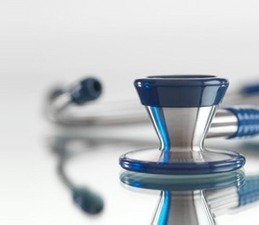EFPIA: Patient engagement – Blockbuster drug of the 21st century
23/12/2013IBlueButton lets patients track their medical care on their smartphones
23/12/2013I’m Your Doctor, May I please have your email address for communications? #hcsm
Getting the most out of any and all connections with our patients has proved somewhat problematic. Figuring out how to bring ourselves, and our patients, into the 21st-century world of electronics telecommunications and medical informatics has been a daunting challenge.
Something as simple as « May we please have your email address for communications? » has stirred up a beehive of controversy we never thought would exist in building the patient-centered medical home.
There is clearly a longstanding, and possibly well deserved mistrust when it comes to having your healthcare information fly over the electronic airwaves.
You would be amazed by the array of reactions we get when we ask patients if we can add their email to our electronic health record, or enroll them in our electronic patient portal.
There’s clearly a sense that they fear that someone with nefarious motivation is going to get hold of their cholesterol levels, and do misdeeds with it.
People seem perfectly comfortable putting their major credit card numbers online, banking online, and putting their home address and when they’re away on vacation on their Facebook page, but I think people fear that someone is going to see some of their health information and somehow discriminate against them, get them fired, raise their life insurance rates, or otherwise do them harm.
I think we shouldn’t be so naive as to think that if someone really wanted to see some of our protected health information they wouldn’t be able to.
This data streams across multiple sources of data, from the lab to the servers in the hospital, the insurance companies, and claims data carry our diagnoses. If the NSA can get our phone numbers and Target cannot keep our credit cards safe, then certainly getting your latest creatinine level should not be that big a challenge.
These additional sources of contact with patients improve communication, unburden our phones, and allow the front desk staff to more efficiently take care of patients who are right there in front of them. It allows them to do today’s work today. There are fewer phone calls saying the doctor never called me with my blood test results, I have a question for the doctor, I want an appointment with the doctor.
It’s not that adding yet another source of communication is not fraught with complications. We have already seen this with our post-visit calls, where one of our medical technicians calls patients after their visit to see if they have any unanswered questions for their practitioner. This has, understandably, led to an enormous number of follow-up calls needing to be made. It is amazing how many patients get home and realize they had a whole other agenda they wanted to go over with their provider but forgot (or did not have time) to mention.
Most of us have figured out a system where we find that half hour or 45 minutes to go over the week’s labs, make those phone calls. Some I know will be brief, everything looks fine, see you in a year. Some I know will be a long, drawn out conversation, where I have to explain to them that an elevated percentage of eosinophils on their white blood cell count differential is nothing to worry about.
It is great to be able to do this electronically with a few clicks of the mouse, and a few brief lines of text. Even knowing there’s going to be a follow-up email, it ends up being much more efficient. The loop gets closed on following up results much more effectively, doctors inboxes get cleared, and patients find out what their doctor found and planned for them after the end of the visit, instead of the old « well, I never heard from the doctor so I assumed everything was okay. »
Now we just need to make sure that everyone gets on board, and we can safely bring them in to this new, more efficient world. Some will never relent, fears will not be overcome, but this brave new world is coming at us.
See on www.medpagetoday.com




